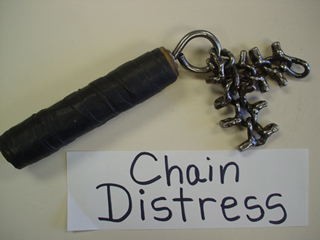Question
Gave a guy a price and a color sample to finish a bunch of cherry bookcases 11' tall. He said the color was real close. Of course it was Minwax red oak stain. Now he says the color is way too light, and pulls out something that is dark red - almost black. I've mixed and mixed and can't get red enough or dark enough with pigment stains. Have no experience with dye stains. How can I get this color without taking a beating price wise?
Dye stain says spray with water and sand to 220 after drying. Then seal with shellac and topcoat as normal. I've already got everything sanded ready to finish, and figured spray stain, wipe down, 1 coat vinyl sealer, sand, 2 coats pre-cat lacquer. Dye stain sounds a lot more labor intensive. Can I tint my Minwax with some dye powder - red and black - with any degree of success?
Forum Responses
(Finishing Forum)
From contributor P:
The simple solution is Chemcraft Old World Mahogany stain. It's very dark.
The other option is to use a dye on the bare wood and then use a stain over it. Though I would not use a water-base dye. Instead, use a solvent dye. To get even coloring, you'll need to apply the dye by spraying. It's quite fast and doesn't add a lot of time to the job. It's just as fast as spraying the last coat of finish.
Don't you have a finishing supplier in your area? ML Campbell, Chemcraft, etc., or anyone else? They can mix the stain for you and set you up with dyes or anything else you need.
Here are some related links:
Spraying a Washcoat
Staining and Blending Difficult Woods
Stain and Finish Recommendations
But, dye stains aren't that tough to use. I actually think they're easier, and in this case, you've got no choice. The only secret is to spray them lightly and build your color with multiple passes. The color you describe is in fact my specialty "Denny Red," which is a mixture of red and black that Jeff Jewitt calls "Burgundy" (what a crock – private joke). Anyway, just buy some Burgundy Transtint from Jeff and mix up a vehicle of 8 parts acetone, 1 part PM reducer (Sherwin-Williams name for Glycol Ether PM) and one part Butyl Cellosolve. Into a gallon of this solvent add half of the bottle of Transtint. Start spraying with the needle turned way in on your gun. You don’t want to spray it dry but you do want it to flash very quickly and not puddle. If the dye is dry four feet behind your spray line, that’s about the right wetness. If you’re not building enough color fast enough, then add the rest of the bottle of Transtint and try again. Alternatively, you can come out here and I’ll give you a gallon of the real deal “Denny Red” which I made from Ciba-Geigy Orasol powders.
